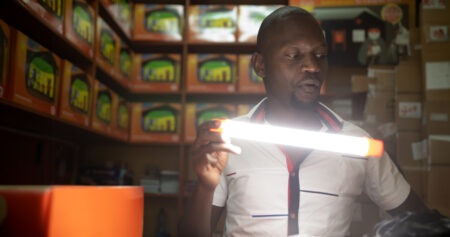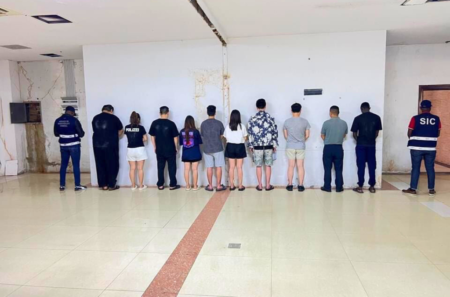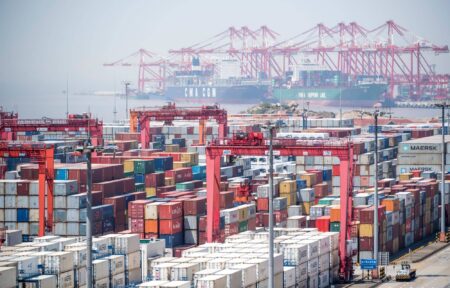- The banking sector in Kenya was stable and resilient in the third quarter of 2021
- The Quarterly Economic Review for the period ending 30th September 2021 indicates that the sector’s total assets increased by 2.4% to KSh 5.8 trillion in September 2021, from KSh 5.7 trillion in June 2021
- Loans and advances accounted for 54.8% of total assets in the third quarter of 2021, a 0.1% point increase from 54.7% of total assets in the second quarter
Kenya’s banking sector remained stable in the third quarter of 2021, said freshly released data by the Central Bank of Kenya (CBK).
In its Quarterly Economic Review for the period ending 30th September 2021, CBK indicates that the sector’s total assets increased by 2.4% to KSh 5.8 trillion (US$ 51 billion) in September 2021, from KSh 5.7 trillion (US$ 50 billion) in June 2021.
CBK said the increase was mainly because of a 2.7% increase in loans and advances during the quarter.
Loans and advances accounted for 54.8% of total assets in the third quarter of 2021, a 0.1% point increase from 54.7% of total assets in the second quarter and a 1.1% point decrease from 55.9% of the total assets in the third quarter of 2020.
Profits
An analysis by Cytonn Investments indicates that Kenya’s banking sector recorded a 2.9% decrease in Profit before Tax (PBT) to KSh 49.1 billion in the third quarter of 2021, from KSh 50.5 billion in the second quarter.
The analysts noted that there was a decline in profitability mainly because of the faster 4.7% increase in expenses to KSh 109.2 billion, from KSh 104.3 billion in the period, compared to the 2.2% increase in income to KSh 157.9 billion, from KSh 154.5 billion in the third quarter of 2021.
Yearly, PBT increased by 68.2%, to KSh 49.1 billion, from KSh 29.2 billion recorded in the third quarter of 2020.
Assets
According to the analysis, the sector’s Return on Assets (ROA) declined marginally by 0.1% points to 2.6% in the period under review, from 2.7% recorded in the second quarter, and increased by 0.8% points from the 1.8% recorded in the third quarter.
Return on Equity (ROE) also declined, recording a 0.7% points decrease to 22.0% in September 2021, from 22.7% in June 2021. However, on a year-to-year basis, the sector’s Return On Equity increased by 6.9% points from the 15.1% recorded in September 2020.
Lending increased by 2.7% to KSh 3.2 trillion in the third quarter of the year, from KSh 3.1 trillion in the second quarter of 2021.
The analysts attributed the increase in loans and advances to financial services, real estate, manufacturing, and personal and household sectors, which increased by 23.7%, 3.3%, 3.0%, and 1.1%, respectively. Yearly, lending was up by 8.5% to KSh 3.2 trillion, from KSh 2.9 trillion in a similar period in 2020.
Deposits recorded a 2.3% increase to KSh 4.3 trillion in September 2021, from KSh 4.2 trillion in June 2021, because of a 2.3% increase in local currency deposits to KSh 3.3 trillion in September 2021, from KSh 3.2 trillion in June 2021.
Compared to last year, deposits increased by 11.3% to KSh 4.3 trillion In the third quarter of 2021, from KSh 3.9 trillion in the third quarter of 2020.
“Key to note, customer deposits remain the main source of funding for banks, accounting for 74.6% of the banking sector’s total liabilities and shareholders’ funds as at the third quarter. This was a 0.2% point decline from the 74.8% recorded in Q2’2021 but 0.5% higher than the 74.1% recorded in Q3’2020,” the analysis noted.
Credit risk remained relatively high in the sector, despite the gross Non-Performing Loans (NPLs) ratio reducing to 13.6% in Q3’2021, from 14.0% in Q2’2021. The Energy sector registered the highest increase in NPLs by 5.9% in Q3’2021 because of delayed payments on performed contracts. Year on year, the NPL ratio remained unchanged at 13.6%,
The sector’s NPL coverage ratio increased to 53.5% in Q3’2021 from 53.0% in Q2’2021, indicating that the banks continued to maintain high provisioning levels given the harsh economic conditions. The NPL coverage as of Q3’2020 stood at 46.0%.
World Bank ranks Kenya fourth in Africa on Human Capital outcomes
Economic performance
Overall, the CBK document indicated that the economy rebounded strongly in the first three quarters of 2021, supported by the easing of COVID-19 restrictions and prompt Government interventions.
The growth momentum remained strong in the third quarter of 2021, with the economy growing by 9.9 per cent compared to a contraction of -2.1 per cent in the third quarter of 2020.
The strong performance was supported by continued recovery in manufacturing, construction, transport and
storage, education, accommodation and food services, and wholesale and retail trade.
The agricultural sector remained subdued following unfavourable weather in most parts of the
country, which affected crop production.
Bankers: Poor financing discouraging agricultural sector public investors










